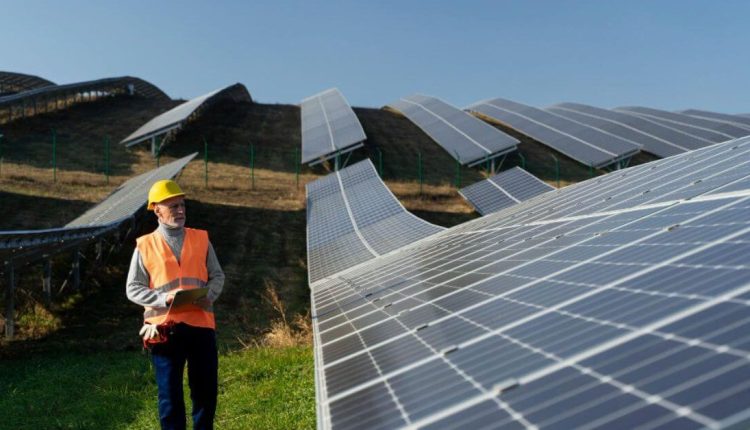How Many Solar Panels Does It Take To Power a Factory?
Overview
- Solar panels are important parts of solar energy systems because they convert sunlight into energy or electricity.
- Building a solar system around your energy consumption can help you make plans accordingly, maximizing this investment.
- Location, weather, and sunlight exposure can impact the efficiency of your solar energy systems.
- Partnering with reputable suppliers allows you to grab a hold of efficient solar panel products.
- Solar batteries can help solve the intermittent nature of sunlight by storing excess energy from peak hours.
In an age where sustainability is a must in all our operations, switching to solar systems is a priority. Factories across many industries are encouraged and pushed to transition. But in adopting this new technology, many questions arise. One of which is exploring an accurate quantity of solar panels to use.
How Many Solar Panels Does it Take to Power a Factory?
Solar panels are key parts when transitioning to a greener energy source. After all, they are the direct connection that links the sun and energy. Also known as PV panels, they are one of the components in a photovoltaic system. They consist of photovoltaic cells that convert sunlight into particles of energy.
In contemplating how many panels you should get for your factory, the number wouldn’t be accurate without considering a few things first. These are the inverter, racking, optimizers, the factory’s meter, energy monitoring, and energy storage solutions.
Factors Influencing Solar Panel Requirements
Since the quantity of solar panels is not only the sole part of the solar energy system, reviewing the other components you need to assess is important. These details are needed so that your investment can work properly and efficiently. Consequently, these are also the factors to consider when choosing solar power for your factory.
Energy Consumption of the Factory
Understanding your energy consumption is a necessary way to avoid operation complications. Switching to solar energy is already a big and sustainable jump. Factories that are already in demand do not need any more hindrances to their timelines. More often than not, the key strategy to maximize this investment is to learn your current status in energy consumption.
This step needs an accurate assessment of your previous energy data. Apart from that, considering peak usage times and planned expansions should also be considered. Using this information serves as the basis for determining all the other parts of your solar energy systems, especially your solar panels.
Location and Climate
Geography is one of the crucial information you need to know before installing solar energy systems. This is because it can impact the efficiency of your investment. But this does not mean certain areas would not benefit from this sustainable practice at all. It simply means that there needs to be more thoughtful planning to ensure the quality of your systems.
The first detail to learn is how much sunlight your area receives. Direct sun exposure can help solar panels harvest more renewable energy. A south-facing location is the best with all-day direct sun exposure. If your location does not meet the right direction requirements, reputable suppliers can strategize a way to help you maximize your sunlight harvest.
Second, the weather can affect how much energy you get. This is because gloomier and rainy locations may not receive the same amount of harvest compared to sunnier places.
Efficiency of Solar Panels
Since solar panels are one of the most important components of this system, it is essential to consider their efficiency. Not all solar panels are created alike. In fact, many types of solar panels are available in the market. Each has its distinct advantages.
A way to learn a solar panel’s efficiency is through a few steps:
- Monitoring the smooth run of your solar energy system.
- Reviewing your electricity bills after the installation of this investment.
- Performing a visual inspection of your solar panels.
Partnering with a reliable solar energy company allows you to get the best panel for you. They make sure that their solar panels have the optimal balance of efficiency and capacity.
Storage Solutions
Lastly, storage solutions are necessary to consider. However, this does depend on the purpose of your solar energy. Some won’t need it but it is a practical component for longer use of your electricity.
Solar storage or batteries, are essential to solve solar power’s intermittent nature. This means that it can help your factory run smoothly at any time of day. After all, the amount of sunlight does not remain the same throughout the day. Apart from dusks or dawns, factors like slight drizzle and cloudiness can affect how much energy you can harvest.
Adding solar batteries or other storage solutions can help you get stable energy. This is because excess energy from peak sun hours can be stored away.
Key Takeaway
Figuring out how many solar panels to power a factory is more of an analysis of your business’s current situation. Moreover, it is also a review of the other components in your solar energy systems.
Solaric is your trusted partner for the job. We offer our clients quality solar energy systems with over a hundred successful projects. Our long-lasting solar panels are designed to support the start of your sustainability journey. Contact us today to start experiencing the benefits of harnessing the sun!



Comments are closed.